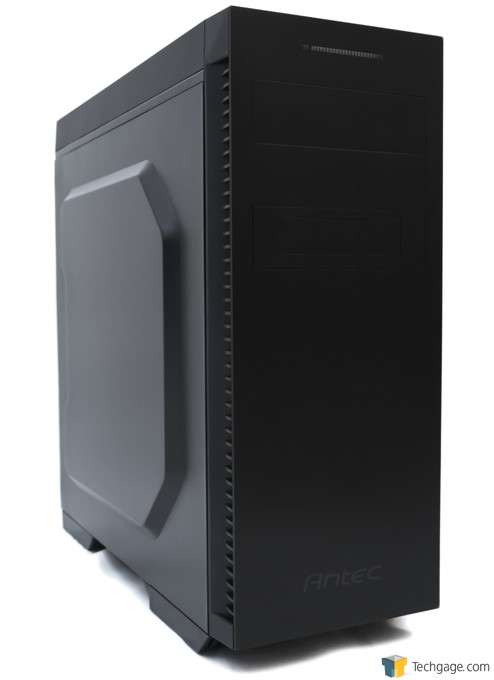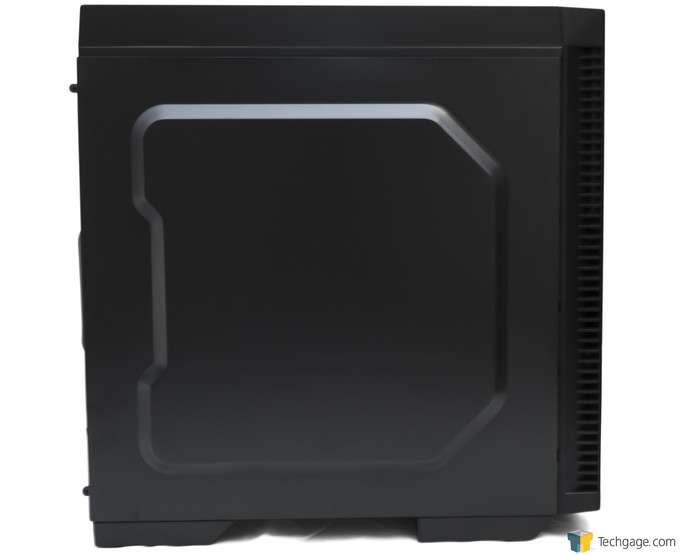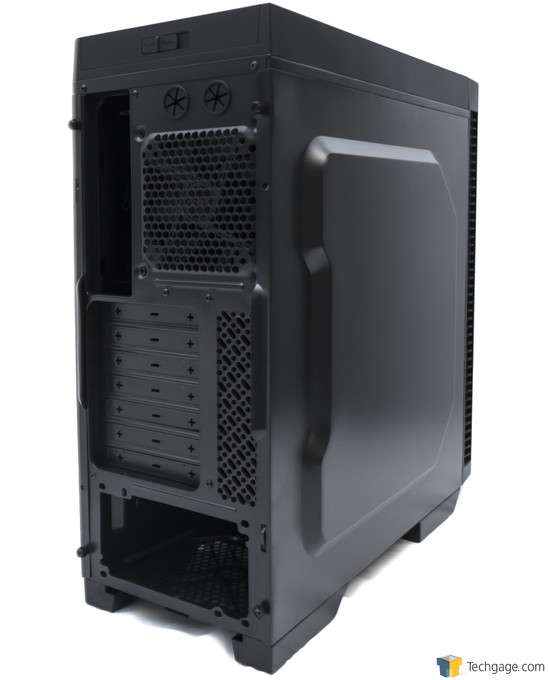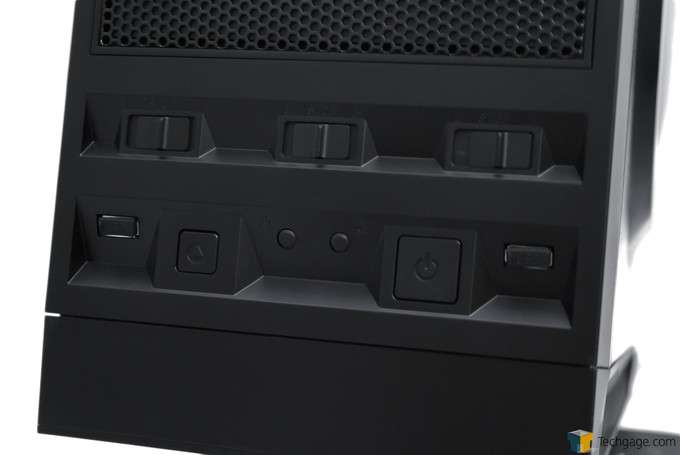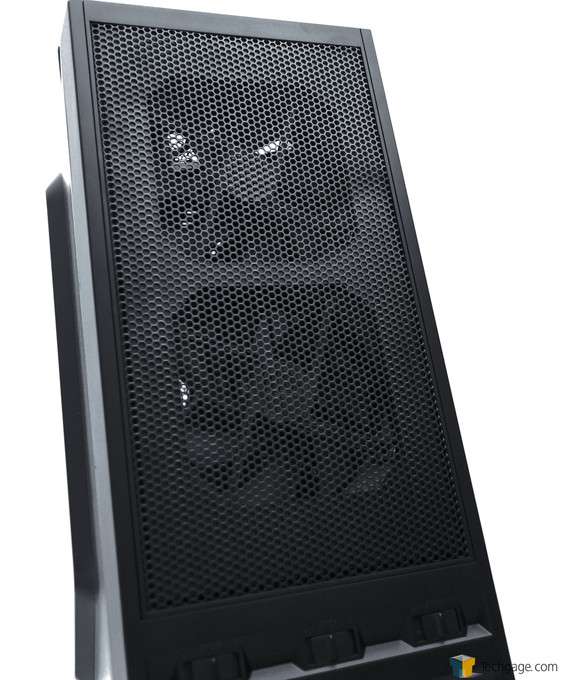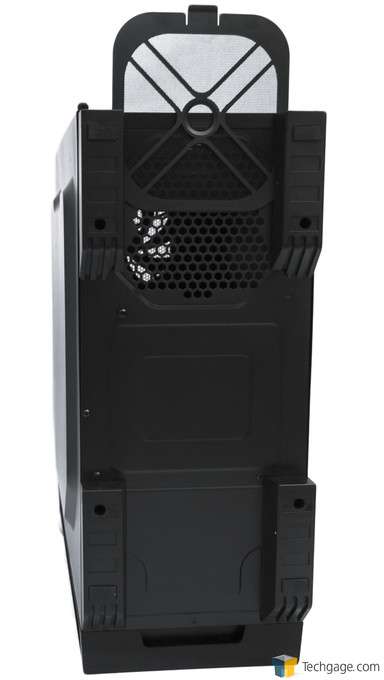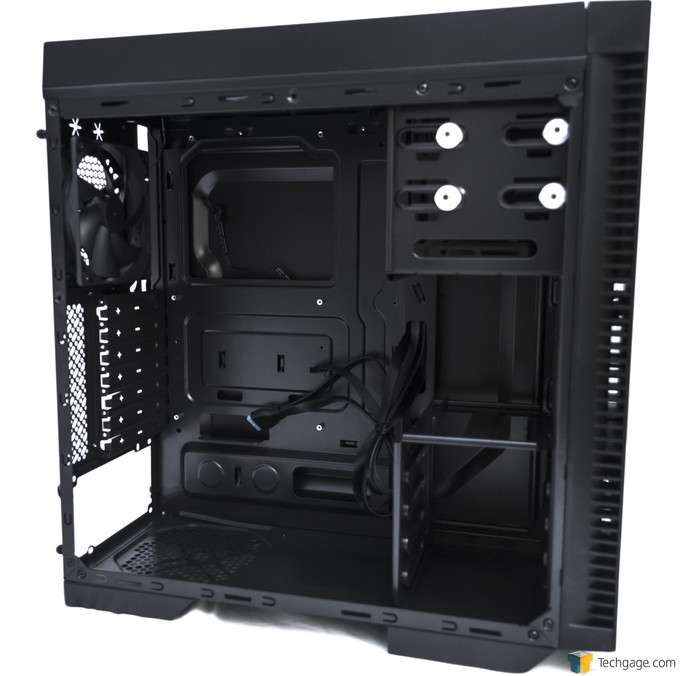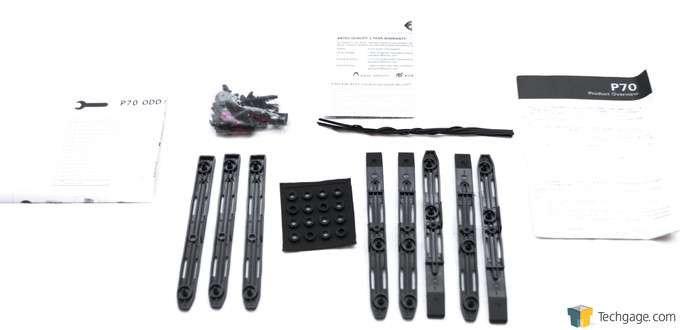- Qualcomm Launches Snapdragon 4 Gen 2 Mobile Platform
- AMD Launches Ryzen PRO 7000 Series Mobile & Desktop Platform
- Intel Launches Sleek Single-Slot Arc Pro A60 Workstation Graphics Card
- NVIDIA Announces Latest Ada Lovelace Additions: GeForce RTX 4060 Ti & RTX 4060
- Maxon Redshift With AMD Radeon GPU Rendering Support Now Available
The Old Lady In A Newish Dress – A Review Of Antec’s P70 Mid-Tower Chassis

It’s been well over three years since we’ve taken a look at an Antec chassis, so we’re glad to have a new one on the testbench to take a look at: P70. Priced at around $70, this is an affordable mid-tower, and it has some attractive styling to boot. But does it live up to the pedigree we’ve come to expect from Antec? There’s only one way to find out.
Page 1 – Introduction, A Look At The P70’s Hardware
I’ve often made comparisons between PC chassis and automobiles. As spurious as the relationship might seem to be, I think they actually do share much in common.
Take, as an example, one of my more recent review subjects. Because it is such a great synergy of style and design, a near-perfect blend of art and engineering, I see it as something akin to a supercar, something like the McLaren 675LT.
But not every car – nor every PC chassis – is that special. Far more common are utilitarian cars such as a Ford Focus or a Toyota Corolla. Ford, Toyota and their competitors spend billions annually to win this segment of the market.
Similarly, the PC chassis market is bursting at the seams with no-frills products, and this is where chassis manufacturers compete hardest for your dollars. So while top-tier products grab all the headlines and get all the love, the more common products have one big job, and that is to work properly and reliably. Fail at that, and you won’t sell a thing. That’s just how things work in a world where sheer volume sales determine whether or not a product is successful.
Viewed in that context, Antec’s P70 is actually a very important product. It’s not a top-tier showstopper, but it occupies that portion of the market where builders get what are often their first impressions about a company and its products and design philosophies. If the P70 has any glaring problems, it becomes the proverbial albatross around Antec’s neck.
Let’s have a look at the P70, then, shall we?
The Antec P70 is a mid-tower chassis designed to host ATX, mATX, and mini-ITX systems. Aesthetically it is monolithic, with just a bulge on each side panel and vents on the top panel to embellish its styling. Overall, it cuts a clean profile. Perhaps the most interesting detail on the front of the chassis is the long LED slit near the top. This lights up when you turn on your PC.
This shot highlights the big bulge on the left side panel, which is mirrored on the other side, and the long array of vents at the front of the chassis. These vents are the primary intake openings for the chassis. The P70 can host a pair of 120mm fans up front, although there are no fans installed here out of the box.
The rear of the P70 is fairly conventional. The most noteworthy details are the now-standard bottom-mounted PSU location (as an aside, Antec was, along with Lian Li, one of the first chassis manufacturers to feature bottom-mounted PSUs with its now-iconic P180), seven PCI expansion slots, and lots of vents. The expansion slot covers, incidentally, are the knock-out type. Notice, too, the pair of grommets covering tubing pass-throughs for an externally-mounted radiator as well as a 120mm fan mount for rear exhaust duties.
The P70’s most interesting exterior details reside in the top section of the chassis. First is the I/O cluster at the front edge of the top panel. The presentation of buttons, ports and switches is symmetrical and stylish. The power and reset buttons sit in raised square sections; these flank the 3.5mm headphone out/mic in jacks, which Antec have covered up with rubber stops out of the box. To the outside of both the power and reset buttons are two USB 3.0 ports, also covered up with rubber stops. These protective rubber stops are interesting and it’s an original concept by Antec, as far as I know.
Behind these buttons and ports is a trio of three-position fan control switches. Hooking fans up to these will enable you to set your fan speeds to high or low, or turn them off completely. By default, the P70 has the two top 120mm fans and the rear exhaust fan hooked up to these fan control switches.
The P70 has an optional cover panel you can install at the top of the chassis if ultimate silence is your build’s top priority. Since this panel covers up the top-mounted fans, relocating the fans to the front is a logical countermeasure in case you do want to use the top cover panel.
There’s nothing special on the P70’s underside. The removable dust filter covering the PSU vent and the four long and wide feet are the only noteworthy details here.
Moving on to a view of the P70’s interior, we see that this Antec design is a mix of modern and ancient chassis concepts. The modern touches include the cable management openings, the CPU cooler cutout on the motherboard tray, and a tool-less optical drive retention system. Heck, you can even count the all-black treatment as a modern touch.
Balancing these out as bygones of an older chassis design era are a permanently-mounted storage drive cage, an alarming shortage of space between the rear of the motherboard tray and the side panel (I’ll show a photo of this later) as well as fan mounts that make radiator installation impossible except at the rear exhaust position. The fact that you can only mount 120mm fans to the chassis is also somewhat anachronistic. Finally, there is also a worrisome lack of depth and height inside this chassis, which may impact systems that use tower-style CPU coolers. Keen Techgage readers will be reminded that I ran into a similar issue in a previous chassis review.
Antec includes two types of drive rails for 3.5″ HDDs, a pad of rubber grommets for the drive rails, a full complement of screws for system assembly, a PC case speaker, and a few twist-ties in a white accessories box. There is also a product overview pamphlet, a parts list, and a warranty pamphlet.
Now that we’ve had our visual tour of the Antec P70, let’s install our test system into it and run it through our tests and evaluations.
Support our efforts! With ad revenue at an all-time low for written websites, we're relying more than ever on reader support to help us continue putting so much effort into this type of content. You can support us by becoming a Patron, or by using our Amazon shopping affiliate links listed through our articles. Thanks for your support!




